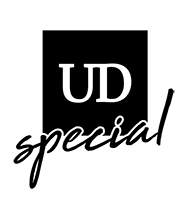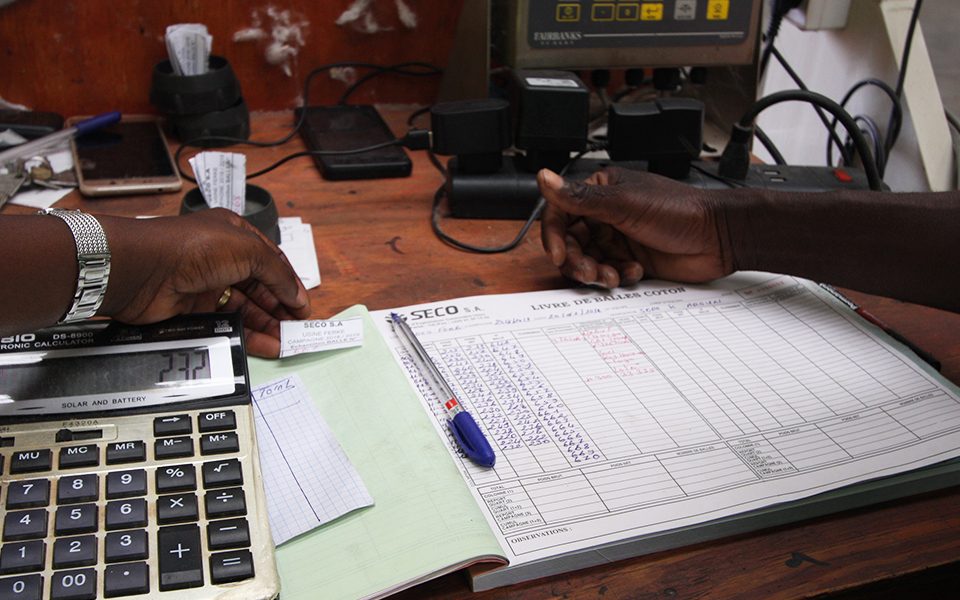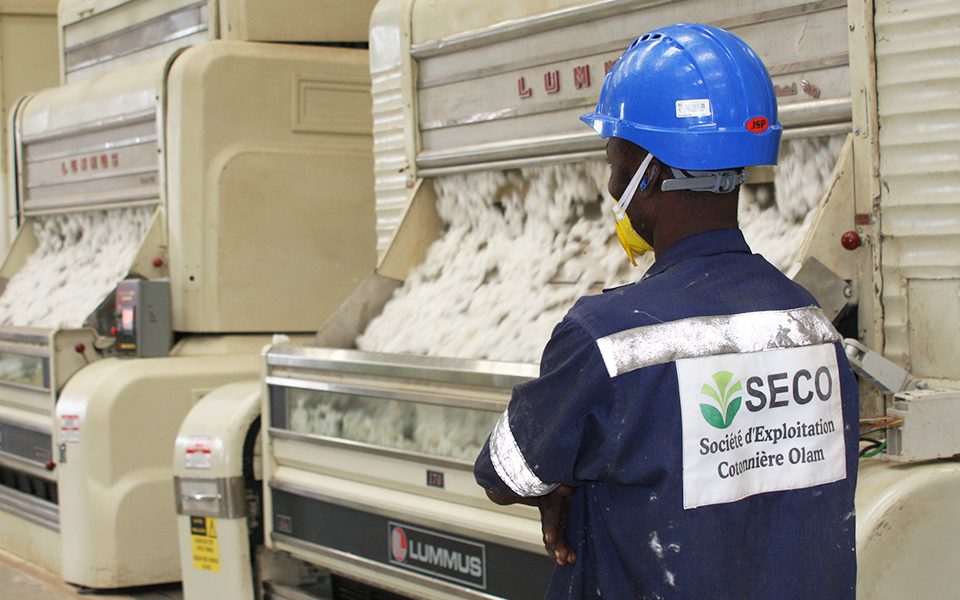Improving farmers' know-how
The environmental conditions for cotton can only be so good – it is the work of the farmers that produces good quality. Every development aid program therefore relies on the training and education of the farmers’ know-how. In technical jargon, this is called “capacity-building.” Partheeban Theodore, Senior Vice President and Country Head, Côte d’Ivoire and Senegal, Olam International, says: “We engage closely with cotton growers and provide agri-inputs, technical oversight, and training to enhance farm productivity and crop quality. This, in turn, contributes to better quality and a reliable supply of cotton fiber for us and increased income for our farmers. The health of the soil and the environment is equally as important as the health and well-being of farmers. No one feels the impact of climate change quite like farmers. Through programs with development partners, we train cotton growers and strengthen their resilience in the wake of potentially erratic weather. They are trained on integrated pest management techniques, soil fertility management, crop nutrition, soil erosion control, and improved irrigation techniques.”
Language and education barriers are solved in practical ways by SECO agronomists when they are in the villages: The local populations speak local dialects and are often unable to read or write. Therefore, a particularly good training approach for cotton farmers is using explanatory boards. Drawings and comics show farmers how to prepare the arable land best, how to make the furrows and grooves for water drainage, how to plant the seeds with the right distance between each plant and, most of all, how to use fertilizers carefully.
Mix of good training and fast payment is what makes SECO so popular
Additional training units are used for teaching workers how to pick the cotton in the best possible way (quality) and how to store and transport it properly. Crop rotation is also part of the sustainability training program so that cotton, corn, and other vegetables/grains/foods are grown in rotation. Therefore, the farmer parcels his land into sections. This is good for maintaining soil quality and also provides food security to farmers and their families and communities.
In the north of Côte d’Ivoire, irrigation only happens with rain – there is still no artificial irrigation. Therefore, time management also plays an important role: The farmers have a defined period of time (about 40 days) to prepare the fields, plough, furrow, plant the seeds, and use fertilizer before the rainy season starts. Thanks to SECO’s satellite-based weather monitoring, they know when the time has come. Richer farmers have robust ploughs and oxen to help them plough. Once they have finished their own land, they then lend their tools and animals to the poorer farmers.
Very important for all the farmers is the financial support from SECO. This support starts long before the harvest time with the offering of seeds for free and the pre-financing of field preparations, including buying fertilizers or pesticides, and it ends after the harvest and delivery to the ginning factory. Usually, farmers have to wait 30 days to be paid after the delivery of the raw cotton. But not with SECO – here, the waiting time is between 10 and 14 days after delivery.
With this mix of support, fast payment, and other forms of assistance, farmers have been able to increase their harvests and margins. The yields increased from an average of 800 to 1,000 kg per hectare in the past to around 1,200 kg/ha in 2018. This, of course, also pays off financially and as word gets around, more farmers want to be part of the SECO program. SECO, on the other hand, is in competition with other cotton producers, and good relations with their supplying farmers pays off for them as well: The integrated cotton ginning business is not only sustainable, but also clearly economical. In 2008 SECO had around 3,000 farmers under contract, but by 2018 the figure had risen to more than 17,500. In 2018 alone, SECO was able to win 1,500 new farmers.





